EcVh0 Iray Skin Shader for Genesis 2 Female (Coming Soon)[Commercial]
 EcVh0
Posts: 535
EcVh0
Posts: 535
Hi guys
This is my second product in DAZ3D! One of the best skin shader that can be appiled onto any genesis 2 female figures without changing its own texture!
Coming very soon :)
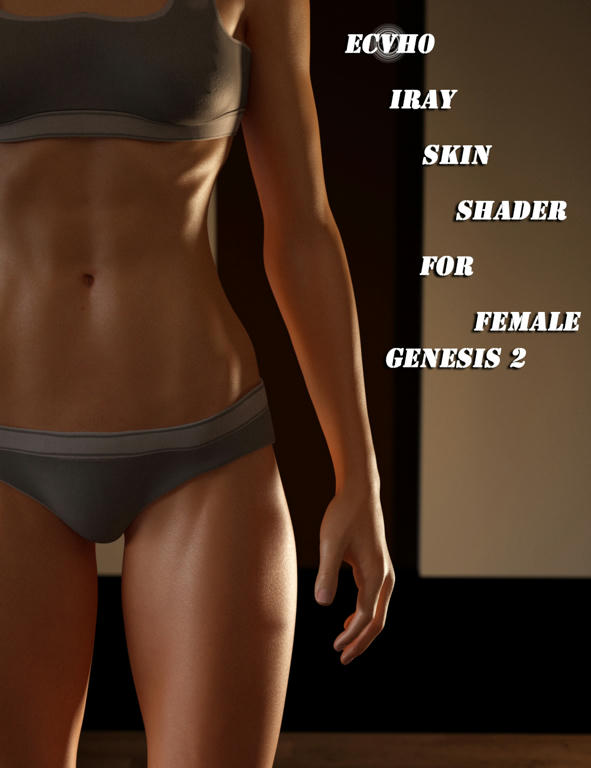
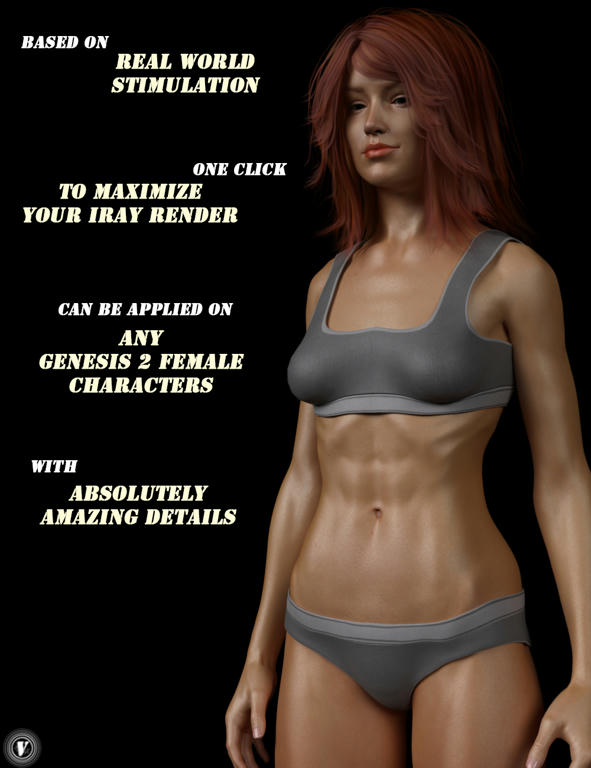
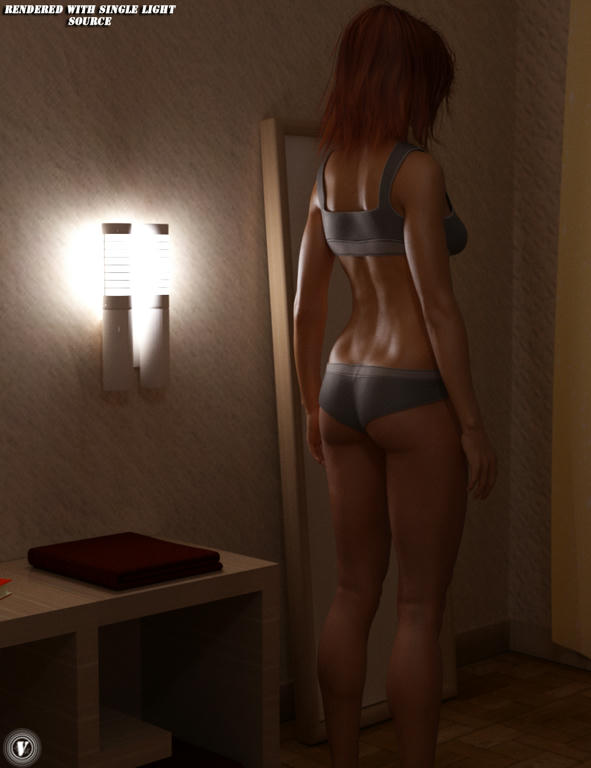
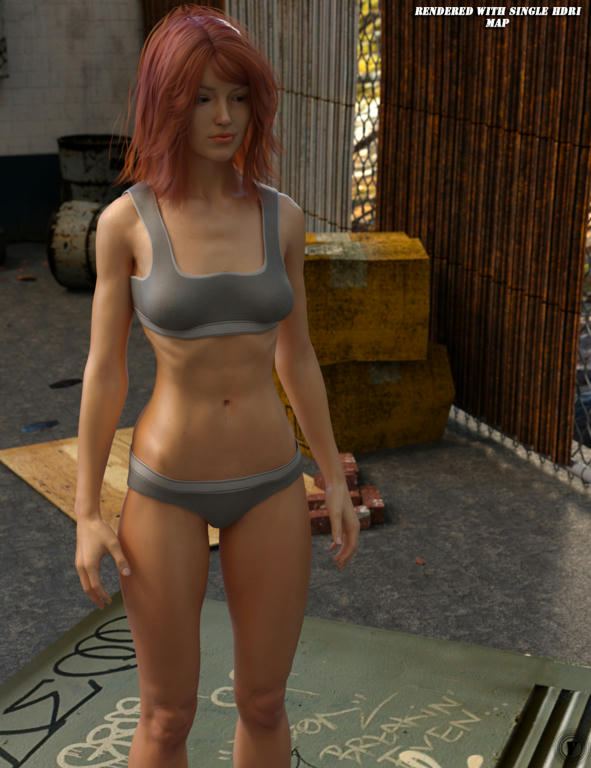
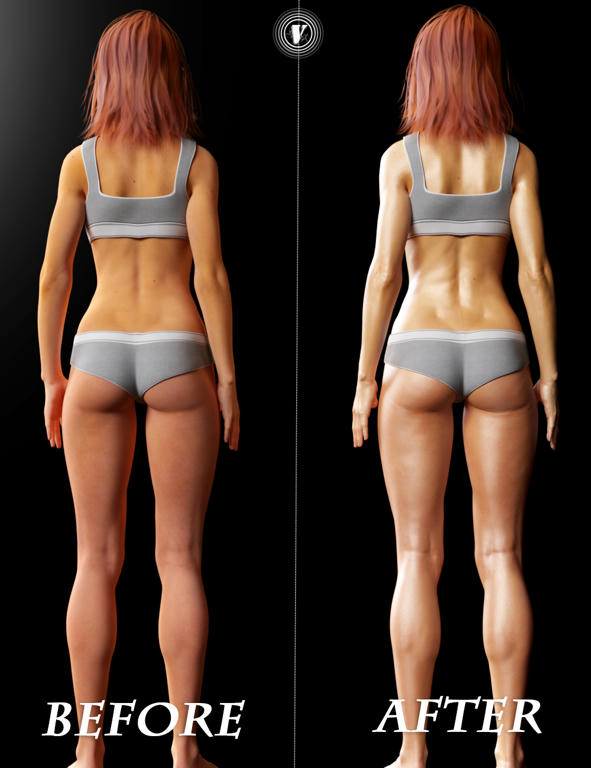
Hope you like it!
EcVh0


Comments
Based on "Real World Stimulation"? Ooooh.
interesting, but she looks a bit bright/sweeting. is it possible to soften a bit or something?
Thought that myself. Should that rather mean "based on Real World Measurements" than "based on Real World Simulation"? Since, Iray is a "Real World Simulation" for itself. Then you'd have my attention...
We have yet to see a real physically based human skin shader, the current ones are more or less full of wrong data, be it wrong Refraction Index values, wrong Glossy Colors (anything else than pure white gives me a headache everytime now). On the other hand, none has yet used black...
The good thing is, that we've been given a Physically Based Renderer... and the bad thing is, that everyone still seems to botch around like in old 3Delight times. Bonkers Based Shading in a Physically Based Rendering environment... I'm thinking about registering the BBS term as a trademark.
Looks good. Will this work with any uh map of genesis 2 female?
That's the question I was wondering. ANY Genesis 2 Female Character, as the store text states, would include ones made with V4 maps, as there are quite a few of those commercially available, as well as V6, A6, TJ6, etc. Unless the text actually means G2F UV map and not character. This s is one of the reasons I often wonder how many of the the people setting up the store read English as a native language.
When applying the shader it will keep most of the model settings (UV maps etc) as what it was before, same as textures (as well as bump and displacement) so yeah it can be fit onto any genesis 2 female characters If that's your question :)
The shader changes the entire parrameter settings without changing the general map to achieve a realistic look on the figure :)
Hope this helps!
Yeah that's true --- there is no 100% physically correct human skin shaders even in the physically correct engine (at least not at this level), so what I've done is try to make it as close as possible to what real world skin is like.
And yeah there are even still plenty sticking to the old classic 3Delight cuz it's here for just way too long XD
True, a 100% correctness will be hard to achive, depending on how the renderer works, which we don't know, 'cause I really doubt NVIDIA let us peak at their Iray source code. And I guess you got me wrong. I didn't mean, that some people are still sticking to the "old classic 3Delight", which depends on personal taste and/or technical restrictions. What I meant is, that people still stick to old classic 3Delight methods by setting up their shaders and stuff by hard guessing, ruling over the thumb and judging by the eye. And thereby often ignoring the laws of physics or even altering them 'till they get what they wanted to. That's not how a Physical Based Renderer works. If you feed in close-to-real-world data, you should get close-to-real-world results. Without messing around with the basic laws of physics.
And yes, I know that the research for real-world data is a painful and lenghthy process, I did some myself for a few months now and already read a crapload of stuff, mainly papers about medical and computer graphics research, I normally wouldn't touch (if not been paid for ).
).
So, I had the opportunity to get a glimpse on your shader (on page 4 of your users manual published on your product's read me page), and I strongly guess that the data on the picture inside represent those of your final product. As boisselazon already mentioned, he finds your skin is a bit too shiny. Me, too. So, let's see:
You chose the PBR Weighted mix, which is, compaired to the other two, the most complicated one to work with. You really need to have your data straight on this one, or the results will be way too inaccurate. Me personally, for that reason I don't like it that much. It's the less forgiving PBR Mix. Next:
Base Color: nothing critical, but since you advertise your product as usable with ANY skin, the yellowish color you chose could collide with lighter skin tones, making them darker as there texture implies. Plain white would be a better choice. That's an IMO.
Translucency Weight seems to be in range for an unmapped shader setup, so it looks like you did your homework on that.
Translucency Color: bright RBG 255, 0, 0 red. Although recommended by some, without an additional texture masking off f.e. eyebrows, you'll get a bit of a problem with lighter colored eyebrows, like on those of Victoria 6. Additionally, the translucency color is thought to simulate the coloring from the blood within the dermis layer of human skin. Real-World blood color is a bit different from 255, 0, 0. More in the range of 180, 65, 65. That's a value I picked from a photo of a real-world bleeding human bodypart. Since there are several roads that lead to Rome, that's also more or less an IMO.
The "Glossy" part of a shader is the "make or break" it. It makes your skin look like if it's been made of plastic, clay, or any other substance that doesn't even far look like human skin. Unfortunately, the "Glossy Weight" portion of the PBR Weighted Mix isn't really explained in the Iray Uber Shader Documentation. If it's similar to the "Top Coat Layering Mode" Weighted, than there could the reason why your skin looks that unnatural shiny. From above mentioned research papers, the oily film (sebum) on human skin normally reflects between 4 to 7% of incident light. In values of linear space that would be between 0.04 and 0.07, 1.0 beeing 100%. Your 0.12 value is almost twice as high, and since your "Glossy Roughness" of 0.9 is below a recommended value of 0.7 for that, there's something doesn't fitting in there. About "Glossy Anisotropy", since there isn't much scattering occuring within the oily film layer, there won't also be a strong, if any, anisotropy effect, since that is the result of scattering; travel path of light is changed 'cause something got in it's way, if I got that that right. "Glossy Color" nevertheless is in a correct range, it's really a relief that there's someone who doesn't put in any greys, oranges, whatever into that. Since the materials human skin is made of are all dielectrics, anything but white would be wrong there, since dielectrics don't have the ability to change the coloring of incident light, only metals do.
"Refraction Index" would be an important part, too, since it has a direct impact on absorption and scattering abilities (see Section 4.3.2 of the NVIDIA Material Definition Language Handbook, page 68 ff for that. Especially the examples on page 71). Although water is a large component of the human body, it's influence on scattering is lower then those of f.e. melanin and hemoglobin, both strong absorbers. 1.33 is the refraction index of Pure Water, which isn't a strong absorber and therefore it'll produce more or less inaccurate results.
I'm pretty aware of the fact that there are many differences, and that there's no precise value for the refraction index of human skin and that even research papers differ on that topic, since it depends on the amount of fluid in the dermal layers, the amount of blood in the dermis, the age of the test subject and even the method of gathering data (in vitro vs. in vivo; of what I'd prefer the latter, since the samples are more or less unaltered, which makes their results IMO more accurate than previously dried, frozen and later rehydrated ones. But how it's said: "Don't trust statistics you didn't personally forge." ).
).
Some representative values could be: 1.52 for Stratum Corneum, 1.34 for Epidermis and 1.41 for Dermis, depending on what part of skin your layer is meant to represent, and as I understood, you can even go with an average of a sum of them. They are taken btw from:
Tearney G. J., Brezinski M. E., Southern J. F., Bouma B. E., Hee M. R. and Fujimoto J. G.
“Determination of the refractive-index of highly scattering human tissue by optical coherence tomography.”
Optics Letters, Volume 20, Issue 21, 1995, 2258–2260
Last but not least: "Base Thin Film" of 180.0 nanometers. That's about 0.00018 milimeters, which is way too low to represent the oily layer; a representative value could be around 20800.0 nm (0.0208 mm) which I found during my own research in an NVIDIA presentation. The "Base Thin Film IOR" is also curious. What should that one represent? For the sebum layer you can go by the default 1.50 there. Funny, that the sweat/oil mix on skin has the same IOR as plastic.
Now, you could say, that you'd give a f... (as some other PA) about physically correctness, but since you advertised your product as "based on Real World Simulation" (which implies IMO, that the shader is based on Real World Data, which obviously isn't the fact; and in that case is dangerously close to "false advertising") that won't be a good reply.
I really hope you don't take it personally, and more like a potential customer review/critics. I've no grudge against you or any other, but I'm already tired of products, which are somewhat expensive, being advertised with including an Iray compatible shader, and when you peek under the hood, you find it full of... bonkers is the only word come to my mind. That even newly published DAZ Originals don't meet the requirements of a PBR environment makes it nothing better. So, in the current state, I wouldn't get it even for $2.95, let alone $24.95/ $17.47 introductory price. As a freebie, maybe, but if I had to put that effort into it to adjust the things that aren't that accurate, I could even create one from scratch myself to make it easier for me. I really know how hard it is to slap a 5 layer heterogenous surface, with different refraction indexes, absorption and scattering coefficiencies for each layer, into a plain 2 layer surface (that's minus the "Metallic Flakes" layer, which doesn't really help on such complex as human skin). But for that price I expect a decent amount of professionalism and, more importantly, a somewhat proper research.
seems that previous post is a little harsh. It looks ok to me. maybe a bit shiny but i guess it depends on the look your going for.
now im curious is this a one click thing or do you have to apply each part to the figure sepretly? Honestly some more shiney options would be good i wish there were a few for gen 3 charecters ;-)
Maybe, but even if there are a few days gone by since I wrote that critic, anything I wrote still stands. In a Physically Based Renderer I'd expect one to use Physically Based Shading methods. Means values that are more more than less based on physical correct data. Even more if that one aims at my pouch. If you want my hard earned money, you'd have to impress me positively, or money stays at home.
I agree strongly with you on the opinion, that the G3F's skins need more shiny options... but the reason they don't is that in even their shaders more more than less inaccurate data have been used.
If you want shiny, there's one possible solution (among others, but this one seems to be the easiest): turn your "Glossy Roughnes" up to 1.0 to make that layer minimal shiny/not shiny at all (or else it will add up with the following setting for the Top Coat!), select your skin's Top Coat and set the Top Coat Layering Mode to "Weighted" (according to DAZ's Iray Uber Shader Documentation, this setting can be "used to compute what light is reflected back from the surface and how much passes through to the next layer".) and the Top Coat Weight to a value between 0.04 and 0.07 (according to data published in medical research papers, the topmost layer of human skin, the thin oily film aka "sebum", reflects between 4% and 7% of the incident light). Voilá, you get shiny. Which would be more accurate as any "guesswork" currently used, given that the folks at DAZ who built that Iray Uber Shader didn't mess that part completely up.
If you use a specular map, you might want to shut off the limits and set Top Coat weight to a higher value. I found myself using 20 for some shots of Benjamin. Heh.
In that case I would rather suggest to better remove that SpecMap than to fumble around with the settings. The current SpecMaps are still made up with the old techniques for the 3Delight renderer in mind. And those doesn't meet the requirements of a PBR like Iray, not even close.
F.e., the maximum color value for the specularity of human skin would be 0.038725, 0.038725, 0.038725 in linear space, or 58, 58, 58 in RGB. At a "Refraction Index" of 1.49. The SpecMaps I checked recently, including those of the new Victoria 7 & company, contain max color values around 80, 80, 80 RGB and above. That's even way beyond the specularity of plastic. The only artist I currently know of creating specular maps (and other things) with the requirements of a PBR in mind, and who exactly knows what she does, is MEC4D.
Well, I find spec map helpful for making certain parts shinier than others, otherwise characters tend to look dipped in a vat of glycerine. Though sometimes that look is desirable! (very sweaty or coming out of water)
I'm having a bit of trouble with this shader...Or at least, I don't understand exactly how it works. I put the standard Ysabeau texture on my model, then double click the preset for this shader. But, my entire texture seems to change. I thought this shader was just to add the metal flakes to the skin parameters. Is it actually changing the diffuse map? It seems to be. I really just wanted to add some of the nice skin glow that you can get from the newer Gen 3 skins. Hopefully, I'm just doing this wrong. Any help is appreciated. :)